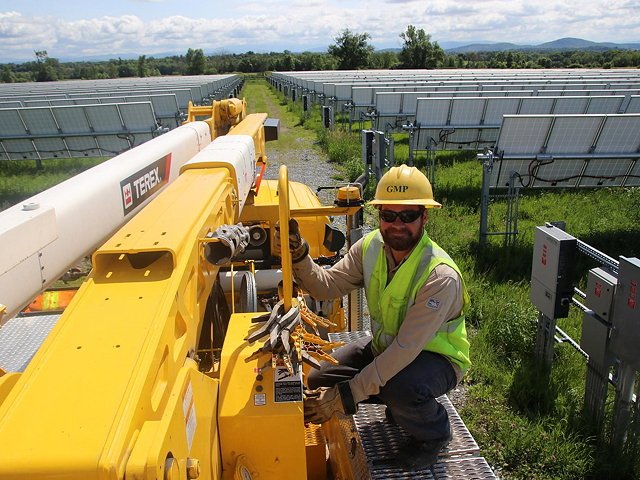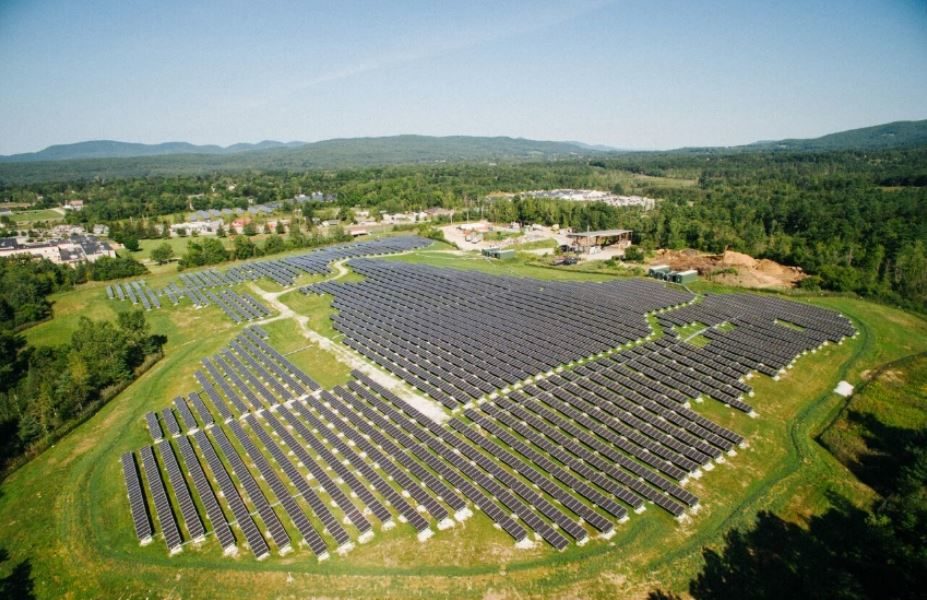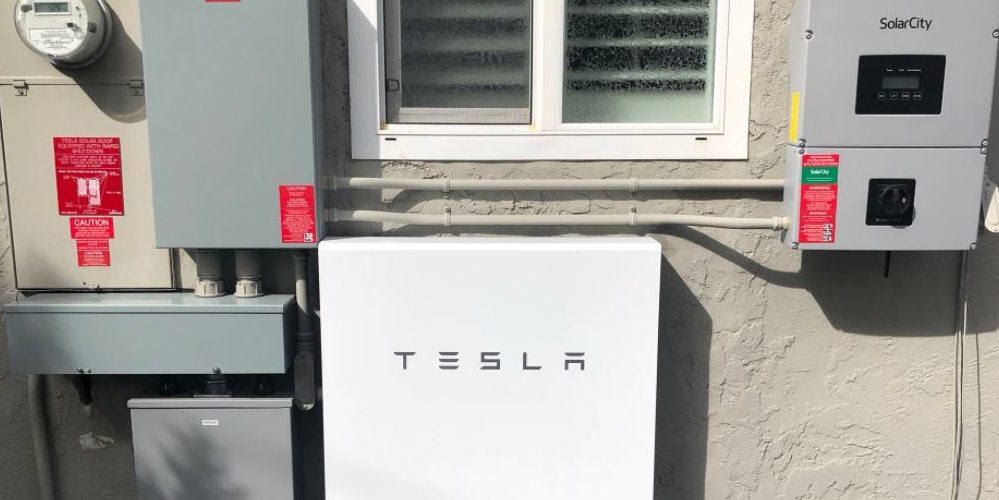In California, distributed solar power was recently shown to have saved utilities more than $650 million from 2013-2015. Not to long ago, the same state also says solar+efficiency avoided $2.6 billion in grid upgrades. In New England, on April 21, we saw solar electricity drive the price of electricity, at 3 PM, just into negative territory -$.00265/kWh (less than a penny).
And this week, the latest story of the energy transition saving utility customers money came from Vermont. In an interview, with local station WCAX 3, Green Mountain Power VP Josh Castonguay says the company’s battery strategy is paying off.
All three of those (energy storage plants noted below) combined, during that peak hour that’s happened this summer, are the equivalent of that, basically worth up to half a million dollars for customers.
Castonguay said the utility’s energy storage projects have been aggressively used during multiple heat waves this summer, including most recently on July 5th. The utility has been pushing three energy storage plants – a distributed 500 unit, 2.5 MW / 6.7 MWh facility built around the Tesla Powerwall 2, a second 2.0 MW / 3.4 MWh plant in Stafford, and a third Tesla PowerPack facility in Panton.
The Panton powerplant, below, is made of Tesla PowerPacks totalling 1 MW / 4 MWh of storage, accompanying 4.9 MW-AC of solar power.

Green Mountain Power
Green Mountain Power’s Stafford Hill landfill project – below – is a 2 MW-AC, 2.5 MW-DC solar plant plus a DC-coupled 2.0 MW / 3.4 MWh (1 MWh of lithium ion plus 2.4 MWh of lead-acid batteries) storage system in Rutland. The positioning of the hardware allows for the potential to island an area of the distribution grid to create a microgrid encompassing the adjacent high school, a designated emergency shelter.

Green Mountain Power
In an interview with the news station, local homeowner Mike Wheeler said he saw his Powerwall drained by 80%.
The utility plans on distributing another 1,500 Powerwalls, totaling 7.5 MW / 20.3 MWh, which will also serve as a backup generator for homeowners who lose power. Participants in Vermont’s program pay $15 a month for 120 months, or a one-time cost of $1,500 per Powerwall.
The utility has further petitioned the state for 5 MW solar + 2 MW/8 MWh battery microgrid projects in Milton & Ferrisburgh.
This content is protected by copyright and may not be reused. If you want to cooperate with us and would like to reuse some of our content, please contact: editors@pv-magazine.com.








By submitting this form you agree to pv magazine using your data for the purposes of publishing your comment.
Your personal data will only be disclosed or otherwise transmitted to third parties for the purposes of spam filtering or if this is necessary for technical maintenance of the website. Any other transfer to third parties will not take place unless this is justified on the basis of applicable data protection regulations or if pv magazine is legally obliged to do so.
You may revoke this consent at any time with effect for the future, in which case your personal data will be deleted immediately. Otherwise, your data will be deleted if pv magazine has processed your request or the purpose of data storage is fulfilled.
Further information on data privacy can be found in our Data Protection Policy.